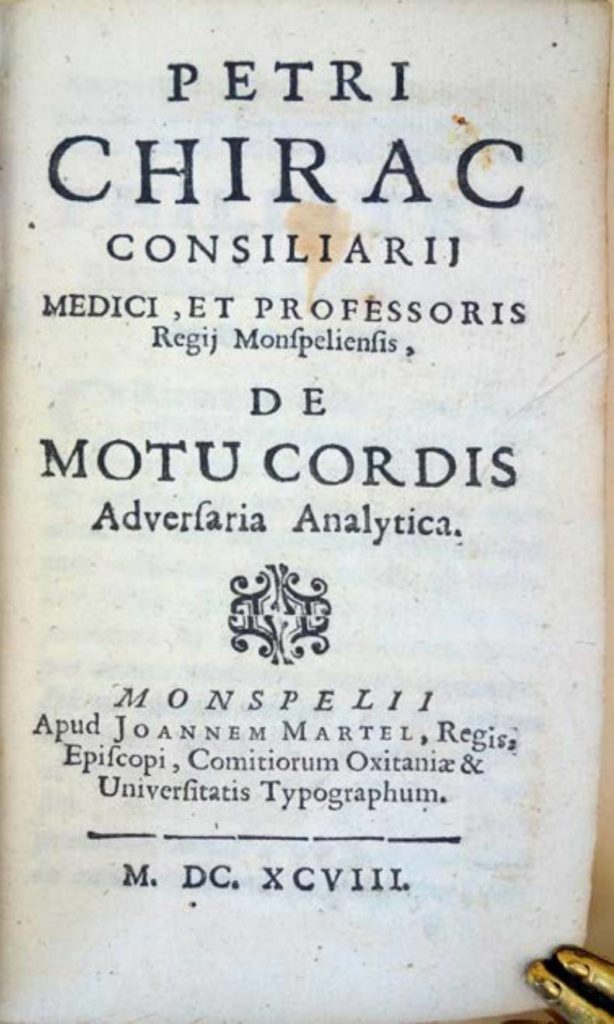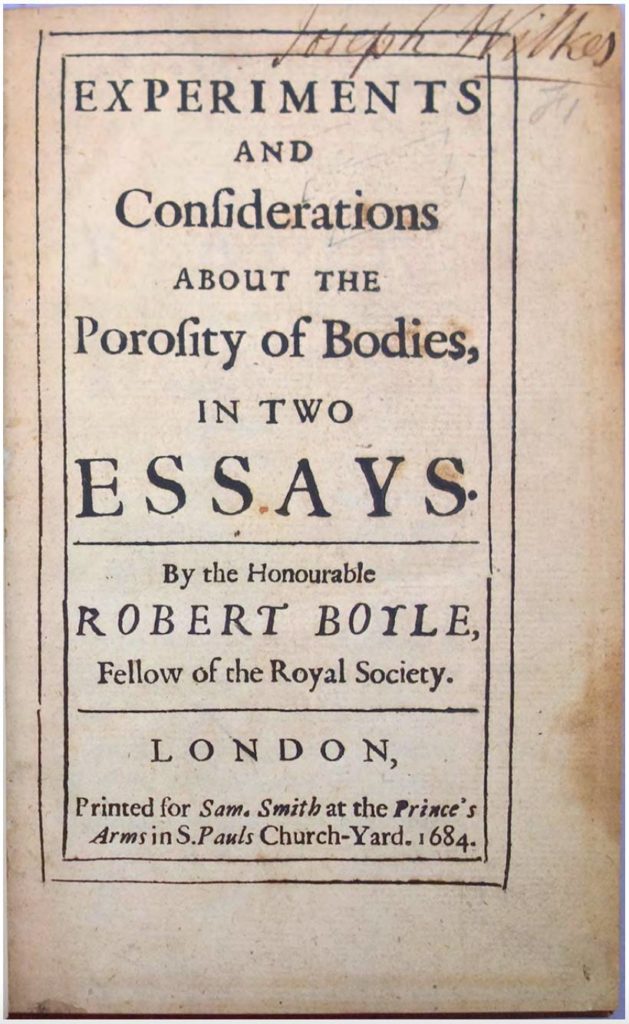
Chirac, Pierre (1657—1732)
De motu cordis adversaria analytica.
12mo. [16], 344, [2], 34pp. Folding engraved plate. Montpellier: Apud Joannem Martel, 1698. Calf, gilt spine ca. 1698, minor chipping to spine extremities, light wear. Minor toning but fine otherwise.
$10,000
First Edition of this rare pioneering experimental study of coronary function, describing the first experimental tying of a coronary vessel, which demonstrated that cardiac arrest occurs in response to coronary ligation. “A special position must be allocated to the French physician Pierre Chirac for having performed the first experimental ligation of a coronary artery in a dog. His book De motu cordis (1698) is an early attempt at experimental pathology with regard to the coronary vessels. Likewise there is much information on the fibers of the heart; some ideas are also expressed as to measuring the heart’s power . . . the blood volume, too, was estimated”.
Riolan, Jean (1577—1657)
Encheiridium anatomicum, et pathologicum, in quo ex naturali constitutione partium, recessus à naturali statu demonstratur.
12mo. [28], 618, [14]pp. Paris: Apud Gasparum Meturas, 1648. 127 x 74 mm. Calf, gilt spine ca; 1648, hinges cracked but holding, spine extremities a bit chipped, light edgewear. Minor browning, but very good.
$3,750
Very Rare First Edition, with no copies except this one appearing in auction records; it was published one year before the 1649 Leiden edition that is sometimes erroneously cited as the first. Riolan’s Encheiridium anatomicum is the work he is best remembered for, since its rejection of some of William Harvey’s ideas on blood circulation prompted Harvey to reply with his Exercitationes duae anatomicae de circulatione sanguinis ad Joannem Riolanum (1649), the only published answer he ever issued to criticisms of De motu cordis. Contrary to Riolan’s intent, his Encheiridium ended up helping to validate Harvey’s theory, as Harvey used Exercitationes duae not only to demolish Riolan’s Galenic notions on the circulation but also to reinforce his own ideas with more direct experimental evidence of the circulation than given in De motu cordis.


Boyle, Robert (1627—1691)
Experiments and considerations about the porosity of bodies, in two essays.
8vo. [4], 145pp. (lacking final blank). London: Sam. Smith, 1684. 167 x 105 mm. Library buckram, hinges cracking. Small marginal stain on first several leaves, occasional foxing but very good. Early owner’s signature on title.
$1,850
First Edition. “To a modern physiologist the ‘Porosity of Bodies’ is of signal interest, for it marks the beginning of the study of osmotic pressure and of the exchange of substances through living membranes, which is at the basis of the regulation of all bodily processes. He commences by considering the skin and sweating, confirming Santorio’s celebrated observations on loss of weight through insensible perspiration, but he points out that a larger fraction of the moisture is lost through the lungs than Santorio had supposed . . . There are interesting observations upon the absorption of medicines through the skin and through wounds . . .The second part of the essay deals with the porosity of solid bodies, and once more we find Boyle speaking in terms of atomic structure and arrangement . . . At the end there is an interesting section on the porosity of glass, in which the methods of staining glass are described at length”.
